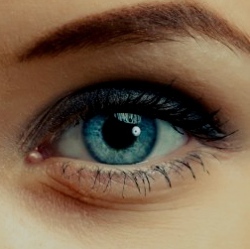
The eye-tracking technology has been honed over the past decade to a point where it is now a viable method for controlling games. Building from experience in the marketing and user-experience fields the company has created a focused platform that will let it move into the game space.
The company is off to a great start. The 2015 International CES marked its debut in gaming, kicking off with a partnership with peripheral maker SteelSeries for the release of the first consumer eye tracker, the $200 SteelSeries Sentry.
And while the device has some level of support for most PC games, Tobii recently announced official support for Assassin’s Creed: Rogue in cooperation with Ubisoft Kiev, making it the first to embrace the technology.
Tobii showcased its technology at the 2015 Game Developers Conference in San Francisco last week, showing both the Sentry and its dev-focused cousin, the Tobii EyeX. GamesBeat met with products and marketing vice president Henrik Johansson there to see first-hand how eye-tracking can improve gaming control.
The eye-tracking device is a small, thin bar that’s similar to Sony’s PS4 PlayStation Camera in shape, though it’s strictly an infrared affair, connected to a computer via a USB3 cable. It’s light enough that a thin peel-and-stick magnet placed on the bottom ridge of a notebook screen or monitor can hold it up. Aside from a one-time calibration that has the user looking at a grid of dots, no other setup is required.
The eye-tracker’s three illuminators beam out IR light to the user’s face while the bar’s camera takes pictures of the lit face at a rate of 60 hertz. Johansson explains that the camera finds your face and eyes, and from there it can lock into where the pupils are. It tracks the pupils specifically, what they’re looking at becomes the target.
Substituting eye-tracking for mouse movement means that the device is already compatible with just about any PC game.
